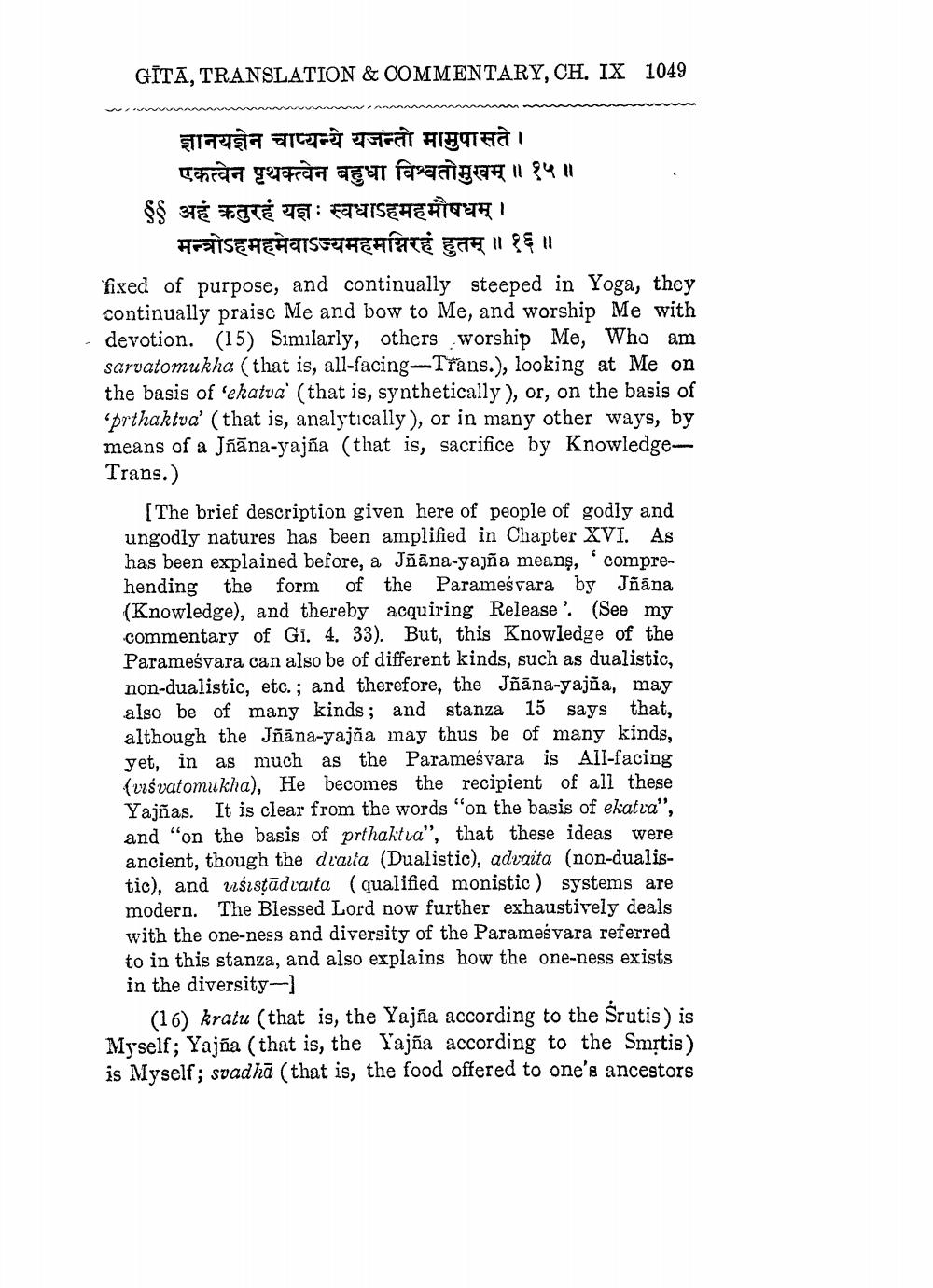________________
GĪTĀ, TRANSLATION & COMMENTARY, CH. IX 1049
ज्ञानयज्ञेन चाप्यन्ये यजन्तो मामुपासते।
एकत्वेन पृथक्त्वेन बहुधा विश्वतोमुखम् ॥ १५ ॥ $$ अहं ऋतुरहं यज्ञः स्वधाऽहमहमौषधम् ।
मन्त्रोऽहमहमेवाऽज्यमहमग्निरहं हुतम् ॥१६॥ fixed of purpose, and continually steeped in Yoga, they
continually praise Me and bow to Me, and worship Me with - devotion. (15) Similarly, others worship Me, Who am
sarvatomukha (that is, all-facing-Trans.), looking at Me on the basis of 'ekatva' (that is, synthetically), or, on the basis of 'prthaktva' (that is, analytically), or in many other ways, by means of a Jñāna-yajña (that is, sacrifice by KnowledgeTrans.)
[The brief description given here of people of godly and ungodly natures has been amplified in Chapter XVI. As has been explained before, a Jñāna-yajña meanş, “comprehending the form of the Parameśvara by Jñāna (Knowledge), and thereby acquiring Release'. (See my commentary of Gi. 4. 33). But, this Knowledge of the Parameśvara can also be of different kinds, such as dualistic, non-dualistic, etc.; and therefore, the Jñāna-yajña, may also be of many kinds; and stanza 15 says that, although the Jñāna-yajña may thus be of many kinds, yet, in as much as the Parameśvara is All-facing (vrśvatomukha), He becomes the recipient of all these Yajñas. It is clear from the words "on the basis of ekatra", and "on the basis of prthaktia”, that these ideas were ancient, though the draita (Dualistic), advaita (non-dualistic), and uśistādcarta (qualified monistic) systems are modern. The Blessed Lord now further exhaustively deals with the one-ness and diversity of the Parameśvara referred to in this stanza, and also explains how the one-ness exists in the diversity-]
(16) kratu (that is, the Yajña according to the Śrutis) is Myself; Yajña (that is, the Yajña according to the Smrtis) is Myself; svadhā (that is, the food offered to one's ancestors




